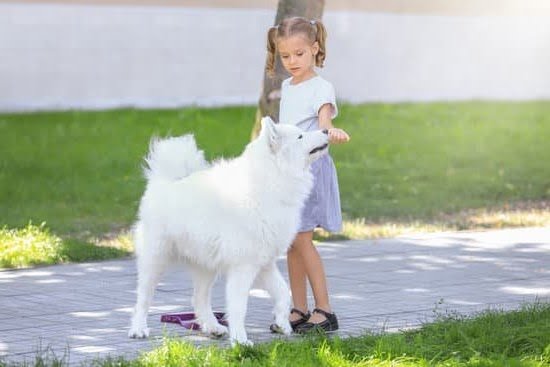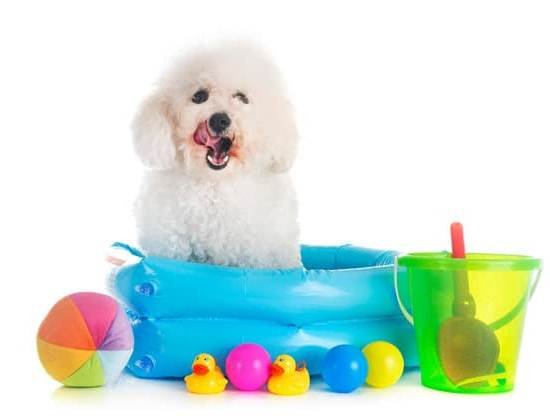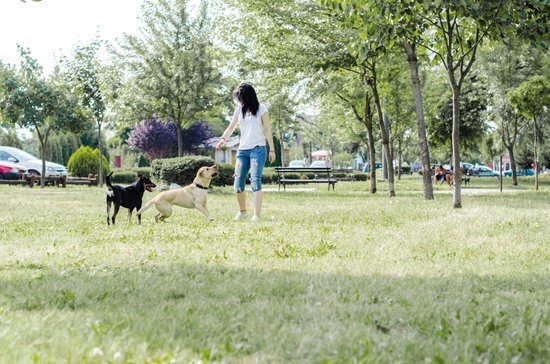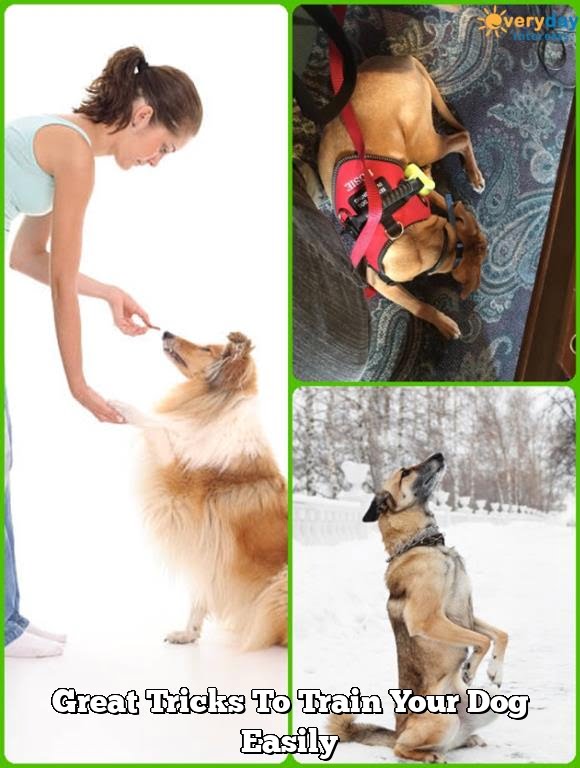Introduction
Training a dog to learn advanced tricks can have many benefits for both the dog and their owners. Teaching a dog advanced tricks can stimulate their mental capacity, building overall intelligence, helping them to strengthen their focus, increase problem solving skills and create stronger bonds with their human counterparts. Additionally, teaching advanced commands can create valuable opportunities for self esteem growth in your pet as well as reducing problem behaviors through positive reinforcement.
Advanced tricks go beyond basic obedience commands such as sit, stay and come. Instead, this type of training requires patience and dedication from both the dog and the trainer in order to accomplish the tasks at hand. Examples of more specialized training tasks include teaching a pet how to fetch accurately on command, roll over or play dead on command or perform more complex commands such as learning how to open doors or shake hands with people they meet. Training a pet these kinds of tasks can require much dedication but it will pay off in relationships between pets and owners that grow into something special due to the trust they have built while engaging in this type of activity together.
It is important to incorporate rewards during the training process as a way to reinforce good behavior throughout the process. Rewards like treats, verbal praise or toys are all good incentives for dogs when attempting difficult tasks or mastering new skills. Not only does this encourages the animal to continue participating but it also helps with their overall confidence which is especially important when it comes time performing the trick in front of unfamiliar people or animals alike. Dogs that are given rewards for mastering these types of activities seem far less inclined to make mistakes when asked later on down the line than those who don’t receive any kind of reward during training
Creating the Right Conditions
Before teaching your dog advanced tricks, it’s essential to make sure that you have the right training area. This means finding an area where there is minimal distractions and your pup can focus on learning their new commands. If you plan to do any outdoor training, make sure to choose a space that is free from other dogs or people that could interfere with your pup’s lesson. You should also pick an area of the same size each time for consistency and recognize areas that may trigger anxiety in your pup such as places full of loud noises. Additionally, bring treats or toys with you so you can reward them when they do something correctly. By providing treats, you will motivate them to work hard and keep practicing until they master the trick.
Establishing a Training Goal
Your dog is capable of learning a variety of advanced skills, including performing specialized agility tasks, following complex commands and cues, retrieving items from different locations, understanding hand signals and responding to distractions. Before getting started on training your pet for these more sophisticated tasks, determine what specific goals you have for your pup. As you get more experience with advanced dog training techniques and progress in their skill level, consider expanding the range of tricks your four-legged pal learns from basic commands such as sit, stay and lay down to engineering projects like going through an obstacle course or finding hidden treats.
Once you have established the training goal you’d like to work towards with your pup and chosen the specific tricks they will learn, craft a plan that outlines how you will teach each skill. This plan should include a list of steps (with accompanying rewards) to break down each trick into smaller parts that are easier for your furry friend to master one at a time. Don’t forget to take time for occasional practice sessions in between working on more challenging tasks so your pet finds it less daunting when getting ready for their next training session. Additionally, set realistic expectations; depending on their age and attention span as well as your patience level with training them on new skills, progression may happen faster or slower than desired outcomes. Finally, enjoy the bonding experience while teaching them their advanced tricks – not only will it strengthen the relationship between the two of you but provide opportunities for plenty of fun moments!
Dog Commands Revisited
Teaching your dog advanced tricks requires patience, consistency and confidence. Start by teaching the basics first such as sit, stay, lie down, heel, and come. Once he has mastered these commands it is time to teach him some more advanced commands like shake a paw or roll over. These commands may take longer to learn that the basic ones as they require more coordination from the dog. When training these commands have good treats in line to reward your pup for following instructions correctly. Break each command down into small pieces and work on one piece at a time before combining them together for the final outcome. Keep each session short as to not overwork or exhaust your pup’s brain. Positive reinforcement techniques should be used throughout training – this could be verbal praise, an extra treat or petting so that your pup associates good behaviour with rewards rather than punishments. Spend ample time practising the different levels of difficulty prior to getting ready for more complicated cues and finally presto – you will have a dog who is able to perform advanced tricks successfully!
Advanced Tricks
Once your dog has mastered the basics, such as sit, come, stay and lay down, they may be ready to learn more complex tricks. These provide a great mental and physical exercise for your dog and can be beneficial for their overall obedience training. Here is a step-by-step guide to teaching these exciting tricks.
First you will need to set some ground rules:
• Make sure that all treats used while training are small and can easily be consumed quickly. This will ensure that the attention of your dog stays on the trick he is learning.
• As with any training strategy have patience. Since advanced tricks are difficult for dogs, your dog needs to get plenty of practice in order for them to understand them easier and quicker.
• Incorporate positive reinforcement in each session by providing lots of praises and rewards once your canine friend performs correctly. Be consistent with praise at all times; this reinforces the idea that if he does something well he gets rewarded which should encourage him to do things again throughout future lessons.
Begin teaching these tricky tasks by performing short sequences before allowing him to repeat what you have done with minor variations in speed or duration. For instance try getting your set up first by hopping over a stick or moving up stairs then command them to do the same thing you have done but with different prompts like “over” or “upstairs” or “downstairs” etc until they fully understand what you want from them during each lesson. You may find that using a clicker has great results as it will instantly inform your pup that they have performed correctly as soon as they complete the task successfully. Utilize verbal cues such as “go around”, “spin” or particular shapes so that they know what shape or movement you would like them to replicate (ex side-shuffles, hops etc). Once these instructions are successful begin gradually increasing the duration and complexity of commands clearly demonstrating what it is you want from your pet in order for them to better understand how their specific movements must work together in order for them succeed within the task. Finally use games such as search-and finds, hide-and-go seek and toss & fetch toys as movement exercises which aid in advanced trick learning as depending on how well thought out each game is sets/scenes/locations can be created where certain signals call for certain behaviors providing an interactive environment crafted exactly for learning purposes where successes can often be quick and easy
Reinforcing Positive Behaviour
Training a dog to do advanced tricks can be fun and rewarding for both the trainer and the pup. It is recommended that you start by training basic commands such as “sit”, “come”, and “stay” first before moving on to more complex tricks. After teaching the basics, you can then begin introducing more advance commands like “rollover” or “fetch.”
In order for training to be successful, it is important to reinforce positive behaviours with rewards that your pup finds motivating. Rewards are especially useful when teaching advanced tricks because they allow the trainer to guide and shape the behaviour into its desired outcome. This should include verbal and physical rewards such as praise or treats while keeping the experience playful and enjoyable. Additionally, make sure to continue offering rewards after mastering each trick to keep learning engaging and maintain your pup’s interest in continuing their training journey. Training should remain consistent until your pooch has mastered all of their tricks!
Conclusion
It’s important to pause and celebrate the success of your dog training adventure, regardless of how far you made it! It’s easy to become discouraged during the more difficult stages of teaching your pup advanced tricks. However, by celebrating every achievement, no matter how small, you and your pup will forge a strong bond that will help continue the magical journey of enjoying life together and entertaining each other. By taking the time to recognize each milestone with treats or attention (or both!), you can show your pup just how much taking the time to learn something new means to both of you for years to come – don’t forget to have some fun! Remember: their behavior is a direct reflection on how you interact with them and any reward system should be handled in an ethical, compassionate way. Positive reinforcement can also come in the form of verbal praise and encouraging, gentle physical touches that show your love as well as respect for their efforts. Ultimately, training your dog should result in a happy, trusting companionship filled with amazing memories that will last forever.

Welcome to the blog! I am a professional dog trainer and have been working with dogs for many years. In this blog, I will be discussing various topics related to dog training, including tips, tricks, and advice. I hope you find this information helpful and informative. Thanks for reading!





